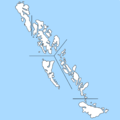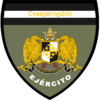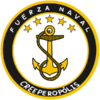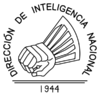Great Revolt of Esclaveta
| Great Revolt of Esclaveta | |||||||
|---|---|---|---|---|---|---|---|
| Part of Revolts of Esclaveta | |||||||
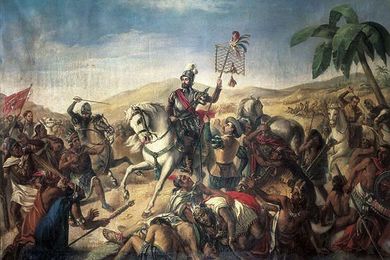 Depiction of the Battle of Pensacola | |||||||
| |||||||
| Belligerents | |||||||
|
Lahui Kuokoa Freed slaves |
| ||||||
| Commanders and leaders | |||||||
|
Kapahu Alana (MIA) Kila Kalea |
| ||||||
| Strength | |||||||
| Unknown | ~4,000 | ||||||
| Casualties and losses | |||||||
| ~45,000 | 2,000+ | ||||||
The Great Revolt of Esclaveta, also known as the Revolt of Esclaveta of 1440, was a failed slave uprising in the Captaincy General of the San Carlos Islands.
Contents
Background
On 12 December 1427, Miguel Quiroga López became Captain General of the San Carlos Islands. His predecessor, Gustavo Hurtado Mendoza died of a stroke on 19 December 1430, although many suspected he was poisoned by one of his slaves or some other Native sympathizer. As a result, Quiroga López had 62 slaves put to death, one for every year of Hurtado Mendoza's life, on 1 January 1431. New of the massacre spread, and slaves on Esclaveta revolted for a second time. Although suffering initial setbacks in the early months on the revolt, the Creeperans managed to put down the revolt by October 1431.
Revolt
Quiroga López increased the quotas expected from the slaves working in the gold mines in 1435. Slaves working on construction sites were also given twice the work as they already had. They were forced to build many roads to and from mines and ports and to and from the capital and villages on the island of Cámarillo. Natives across the colony were forced to work harder and harder, and many desired independence. They cried out to Archbishop José Morales Herrador to intervene on their behalf, but he refused to do so. In 1439, a group of thirty Natives escaped from the Pensacola Plantation on Esclaveta, most of whom were teenage boys with a few teenage girls and women. They decided to help other slaves escape and organize a third revolt. Lead by seventeen year old Kapahu Alana, they began planning the most well thought out revolt of The Enslavement period. In 1440, the slaves stole guns from the plantation and later attacked it on 2 March 1440, killing all Creeperans present and freeing all the slaves there. The plantation was burned down and destroyed and the Natives declared independence from the captaincy general for the Natives of Esclaveta as Lahui Kuokoa, meaning "Nation of Freedom" in the Native language with Kapahu I as its leader.
News of the revolt spread across the captaincy general and inspired many more enslaved Natives in other parts of the islands to also revolt. Slaves working in mines, construction sites, and plantations across the islands rose up against the Creeperans, causing confusion and setbacks for the military who began preparing to put down the revolt in Esclaveta. On 15 July 1440, 153 Creeperans on Esclaveta were massacred by the revolting Natives, the first time Creeperans were massacred by Natives in large numbers. Quiroga López reacted by ordering military forces to take no prisoners and kill any and all Natives they came across. By the end of the year, Kapahu I declared Lahui Kuokoa to be free of Creeperans claiming to have killed or enslaved 1,000 Creeperans and forcing the remainder to leave. The claim was refuted by the government of the captaincy general and claimed that they still held control of the island. By 1441, all revolts outside of Esclaveta had been put down, with 12,000 Natives being killed.

The Creeperans prepared their landing on Esclaveta for 18 July 1441. The Creeperans, lead by José Hernández Córdoba, landed near the capital of Anadesa and fought with the Natives to regain control of the city. The Creeperans were victorious, but the revolt was not crushed. The city was set on fire by the Natives, inflicting heavy casualties amongst the city's inhabitants. The Creeperans marched inland to recapture the ruins of Pensacola with the intentions to capture Kapahu I. The armies of Hernández Córdoba and Kapahu I engaged at the ruins of the plantation on 13 August 1441 at the Battle of Pensacola. The battle ended in a decisive Creeperian victory with most of the Native army being killed or recaptured to used for slave labor. Kapahu I, however, evaded capture and fled west to raise another army. Hernández Córdoba chased him down and engaged Kapahu I's rebuilt army at the Battle of Casadoble on 7 October 1441. Kapahu I's army was again defeated, with most of the army being captured and the remainder killed. He again evaded capture and fled north. Kapahu I and thirty other Native warriors boarded a boat and travelled north to the islands of Pescante to rally support there and continue the uprising, however, he never arrived and was never seen again. He is assumed to have drowned at sea after the boat sank for an unknown reason or the boat was swept out to sea and they died of starvation.
Kapahu I said his armies would be ravaging Pescante by January 1442, but since that did not happen, the Natives still on the run on Esclaveta proclaimed a new leader: Kila I. He marched on Pensacola to recapture the area, but he ran into Hernández Córdoba's army on 17 February 1442 near the village of Hanola. During the battle, Kila I and the Natives were decisively defeated, ending the revolt and bringing an end to the Native declared nation of Lahui Kuokoa. Kila I was captured and burned alive by the Creeperans on 19 February 1442. The war killed an estimated 45,000 Natives.
Aftermath
Following the uprising, working conditions were made even harsher for the Natives as a punishment for the revolt. All men above the age of eighteen were also castrated, eventually leading to a decrease in the Native population over the next 30 years. Quiroga López resigned on 1 March 1463 and was succeeded by Melchor Bravo Saravia. He traveled to Esclaveta and met with Natives to discuss the status of slavery on the islands. They came to a compromise and Bravo Saravia agreed to abolish slavery for women, children, and the elderly, beginning the path to abolition on the islands. He died on 14 July 1477.
